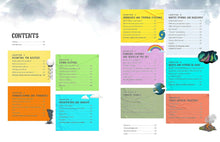
Designed to harness children’s natural curiosity, this action-packed introduction to meteorology incorporates firsthand accounts from inside Mother Nature’s most dramatic moments. For each phenomenon introduced, explanatory text, informative illustrations, sidebars, and asides allow readers to explore at their own pace. Along with storm-chasing reports and photos from in the field, each chapter includes a step-by-step hands-on activity for engaging with the science.
What is the polar vortex? And why does a disrupted “polar vortex” lead to extreme cold air outbreaks across Europe, Asia, and North America? Among the many “in case you were wondering” questions addressed:
Weather is one of the most accessible sciences there is. Everyone experiences it in some way or another, and learning the basics behind it naturally sparks interest in other sciences. That’s why Extreme Weather for Kids also teaches the basic principles of scientific observation, while placing a key emphasis on safety.
What is the polar vortex? And why does a disrupted “polar vortex” lead to extreme cold air outbreaks across Europe, Asia, and North America? Among the many “in case you were wondering” questions addressed:
- How strong can a hurricane get?
- What’s the biggest tornado to have ever happened?
- How large can hail get?
- Is “thundersnow” real? How does it form?
- How thick is lightning? And how powerful is it?
- Where can I find “fossilized lightning?”
- Can it snow in the desert?
- What are “solar storms?”
- What makes the northern (and southern) lights?
Weather is one of the most accessible sciences there is. Everyone experiences it in some way or another, and learning the basics behind it naturally sparks interest in other sciences. That’s why Extreme Weather for Kids also teaches the basic principles of scientific observation, while placing a key emphasis on safety.
Tagged weather and seasons











